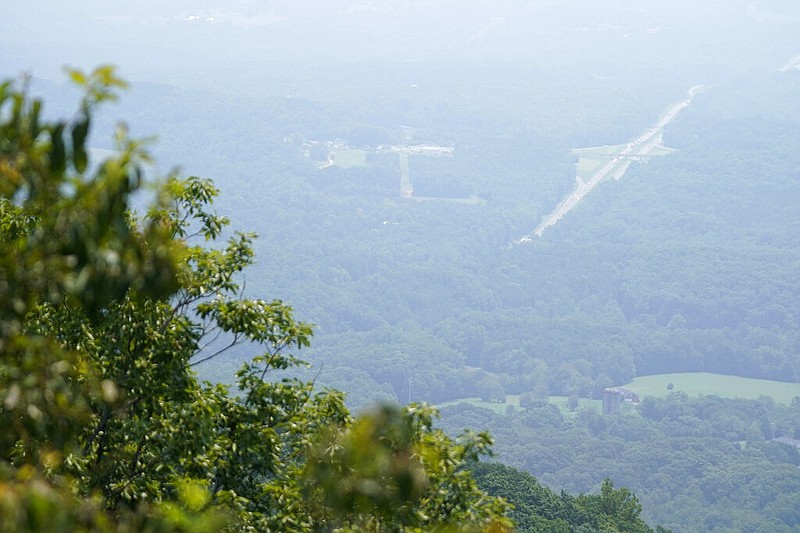It's been a hazy August in Arkansas, and it'll probably stay that way for the rest of the month.
Smoke from forest fires hundreds of miles away has blown into Arkansas and descended to the surface, according to the National Weather Service.
"The upper-level pattern is favorable for the smoke to make its way in from the West and Canada, so it's bringing that wildfire smoke into here," said Tyler Snider, a meteorologist with the agency's Tulsa office, which monitors Northwest Arkansas weather.
"It's allowed for some rather pretty sunrises and sunsets," Snider said. "The downside is the air quality is rather poor from that smoke."
According to airnow.gov, the air quality was "moderate" across Arkansas on Friday and will stay that way at least through today. The state's air quality shifted from "good" to "moderate" around July 21.
The "primary pollutant" in Arkansas' air is Particulate Matter 2.5, according to the website. Also known as PM2.5, its name reflects the size of its particles -- less than 2.5 micrometers in diameter.
"Particulate matter contains microscopic solids or liquid droplets that are so small that they can be inhaled and cause serious health problems," according to the U.S. Environmental Protection Agency. "Some particles less than 10 micrometers in diameter can get deep into your lungs and some may even get into your bloodstream. Of these, particles less than 2.5 micrometers in diameter, also known as fine particles or PM2.5, pose the greatest risk to health.
"Fine particles are also the main cause of reduced visibility (haze) in parts of the United States, including many of our treasured national parks and wilderness areas."
While most people can open windows and go outdoors when the air quality is moderate, airnow.gov advises "smoke-sensitive individuals" to consider keeping outdoor activities light and short until the air quality improves.
Moderate is only one category away from "good," on the air-quality index. And good is as good as it gets. Beyond moderate are these categories: unhealthy for sensitive groups, unhealthy, very unhealthy and hazardous.
The air quality has been much worse in other parts of the country because of the wildfires. Wind has blown the smoke across the continent to the East Coast.
On Friday, the air quality was hazardous for inland California, northwest of Sacramento.
"Stay indoors," airnow.gov warned. "Avoid all outdoor physical activity."
It wasn't quite as bad in northern Utah and northern Minnesota, where the air quality was rated unhealthy Friday. Much of middle America was in the moderate category. Most of the states with good ratings were on the east and west coasts.
"The smoke will give a milky white appearance to the sky instead of that deep blue that you're used to," said Snider.
Smoky skies will be with us here in Arkansas, off and on, for a while, said Dan Jaffe, a wildfire expert who is a professor and chairman of the Physical Sciences Division at the University of Washington in Bothell.
"I think most of the smoke over Arkansas now is likely coming from the Canadian fires," Jaffe said. "My guess is that these big fires will continue until the fall rains. So off and on, you will be seeing this smoke until September. ... Right now, air quality in Arkansas is mostly in the moderate category across the whole state, which is definitely higher than normal for you."
Jaffe said intense forest fire years have become more common.
"We are seeing these huge fire years about every other year now," he said. "It's definitely increased in the last decade. When we have a big fire year (like 2017, 2018, 2020 and 2021), the smoke can be seen across the country."
